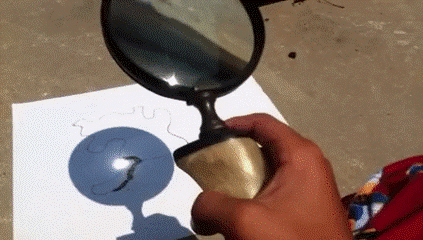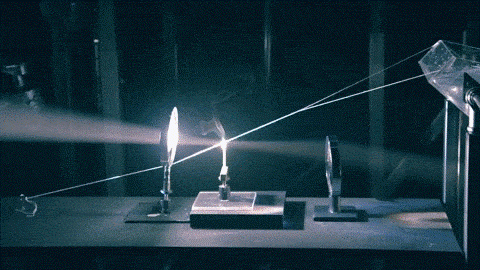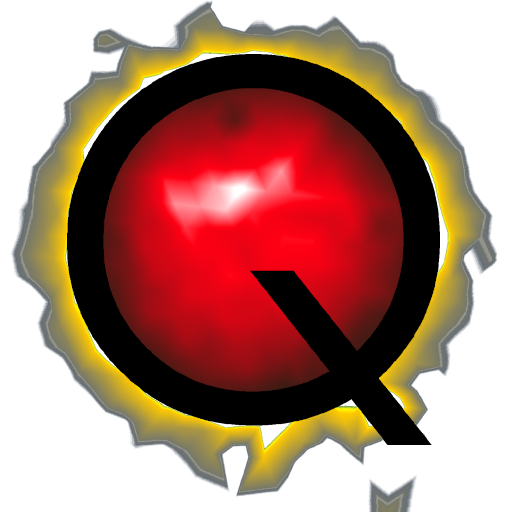Both Beam Power and Beam Size Determine Lethality. More Power Through a Smaller Beam is The Ultimate Goal.
Just ask ChatGPT “Which companies are making 300 kW class High Energy Laser Systems?”
If your answer is like ours, you’ll learn that Lockheed’s doing it, Raytheon’s doing it, Boeing’s doing it, Northrop’s doing it, and General Atomics’ doing it.
There seem to be two types of High Energy Laser (HEL) system development in progress today systems emphasizing highest possible power and systems that emphasizing highest possible precision. How do these different prioritizations play out?
It’s worth comparing lasers to magnifying glasses sometimes. Consider how you might have tried burning stuff with a magnifying glass as a kid and learned that the secret was to focus the light of the sun into a small beam of light which caused whatever you were trying to light on fire to begin smoking and then ignite if you held the beam over it for a long enough period of time.


Well, the light from the sun can be thought of as the beam’s optical power, and your control of the magnifying glass can be thought of as the beam precision. But there is a more technical term for the power of a particular light source being emitted at a location: Irradiance which is defined by the RP Photonics Encyclopedia as follows:
“Irradiance (or flux density) is a term of radiometry and is defined as the radiant flux received by some surface per unit area. In the SI system, it is specified in units of W/m2 (watts per square meter). Irradiance may be applied to light or other kinds of radiation.”.
Ideally a Laser Weapon System (LWS) will be both powerful and possess a high degree of precision (with the ability to maximize the irradiance). But what if the magnifying glass struggles to focus well during the shot? Unlike that twig or ants you were trying to burn up as a kid, the drones, mortar rounds, and missiles lasers could be expected to engage are moving quite fast.
For perspective, lets examine the relative powers of a magnifying glass. For starters, solar irradiance is approximately 1000 W/m². Let’s assume that you have a magnifying glass able to focus sunlight into a beam diameter of 1 mm (0.0001 m). How is the irradiance increased from the base line levels of the sun?
Well, here’s some math to help us figure that out:
Standard Solar Irradiance: at Earth’s surface: Isun=1000 W/m²
Focused Spot Area: If sunlight is focused into a small spot with a diameter dfocus, the area Afocus of this spot is:

Peak Irradiance of Focused Sunlight: The peak irradiance Ipeak when sunlight is focused into this small area is:

Conversion to kW/cm²: To express this in kW/cm², we can use the conversion factor 1 m² = 104 cm 2:

So what does approximately 127.3 kW/cm² of irradiance do? We can get a good overview from Thomas Karr and James Trebes Physics Today article The New Laser Weapons mentions an new term for laser lethality measurement called “fluence”. A good way to think about fluence is that it is the measure of an amount of energy deposited on a surface over time. So to recap:
Beam Power (expressed as kW) + Beam Size (expressed as x and y axis in cm) = Beam Irradiance (expressed as kW/cm²)
Beam Irradiance (expressed as kW/cm² x Time = Beam Fluence (Expressed as kJ/cm²)
In Karr and Trebes article, figures are provided stating the fluence required to melt aluminum is 2.8 kJ/cm³ to melt and ~32 kJ/cm³ to be vaporized. The figure required to melt polyamide is 0.7 kJ/cm³. Note that since these figures are cubed they factor in a 3D element to the fluence equation. We can relate the cubed values and make them squared by adding in an assumption that the material is 1 cm thick. Making this assumption can allow for fluence to be expressed more simply again as kJ/cm².
So now that we know what irradiance and fluence are, it’s time to relate this knowledge to a practical hypothetical comparison. This comparision will use two systems with subtle differences between power and precision. We can take Blue Halo’s 26 kW Locust LWS and compare it to the U.S. Army Rapid Capabilities and Critical Technologies Office (RCCTO) 50 kW Directed Energy Maneuver-Short Range Air Defense (DE M-SHORAD) system. For the sake of this example we will consider how the relative beam size an LWS can make really affects the overall system lethality. So for instructional purposes only, lets assume the following:
•Both the Locust and DE M-SHORAD are in the desert located next to each other as anti-air defense assets
•Locust’s power output capability is 26 kW
•DE M-SHORAD’s power output capability is 50 kW
•Locust is able to propagate a beam diameter size of 2 cm to a drone flying 3 km away
•DE M-SHORAD is able to propagate a beam diameter size of 4 cm to a drone flying 3 km away
So how do these different power levels, beam sizes, irradiance, and fluence match up?
If you haven’t calculated this sort of thing before there are different calculators that can help. We like the ones at LaserSafety.com or at Gentec-EO. The Gentec-EO has some nice options to pick out more customized units of power for the laser so we’ll use calculations from that one on our example. So how do the systems perform?
•The 26-kW system with a 2 cm beam size results in a beam area of 3.1 cm² and an average irradiance of 16.6 kW/cm²
•The 50-kW system with a 4 cm beam size results in a beam area of 12.6 cm² and an average irradiance of 7.9 kW/cm²
Now these numbers work well for a simple comparison but a key variable is missing. Laser beams have a divergence over distance. A typical beam divergence for Laser Weapon Systems ranges between 0.1 to 1 milliradian (mrad) or 0.00573 to 0.0573°. The example below shows an exaggerated beam divergence of 1° which is equivalent to 17.45 mrad.

Assessing Beam Divergence with Persistent Direct Detect Targets
We’ve said before that reusable laser targets can help provide the user with a hardened diagnostics suite able to stand up to high levels of peak irradiance and peak fluence. SemQuest’s most survivable target design has been tested up to 27.9 kW/cm² peak irradiance and 679.4 kJ/cm² of peak fluence as of 8 November 2024. A survival test is set for December 2024 the main goal of this test is to destructively test our most hardened target design.
So how do you figure out beam sizes in open air engagements?
Such a survivable target design can allow an integrated target on a UAS to simply hover in the air and be shot with a laser for long stretches of time. Match that with real-time feedback and it is possible to fly the target to the very edge of a laser weapon system’s effective engagement range and assess how beam divergence is affecting lethality.
Here’s a demonstration using a SemQuest target board for a dynamic shot in the lab. These videos provide context for how SemQuest targes may be used to determine beam size, power on target, and peak irradiance. Here are some videos that show the live test setup for reference and what the SemQuest GUI can display during the shot. Note that the live test setup video uses SemQuest’s 500-Watt laser’s red guide beam just to show relative beam sizes for a recording. This GUI video demonstrates a full power shot while the SLIM 8 target was moving from the background to the foreground.
Live SLIM 8 Beam Divergence Demonstration Video
SemQuest GUI’s Playback of Beam Divergence Demonstration Shot
Now we have to ask. What would you do with this sort of beam diagnostics capability?
